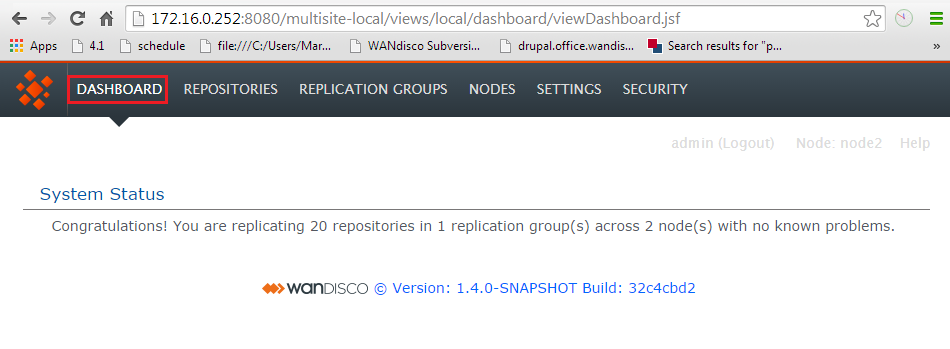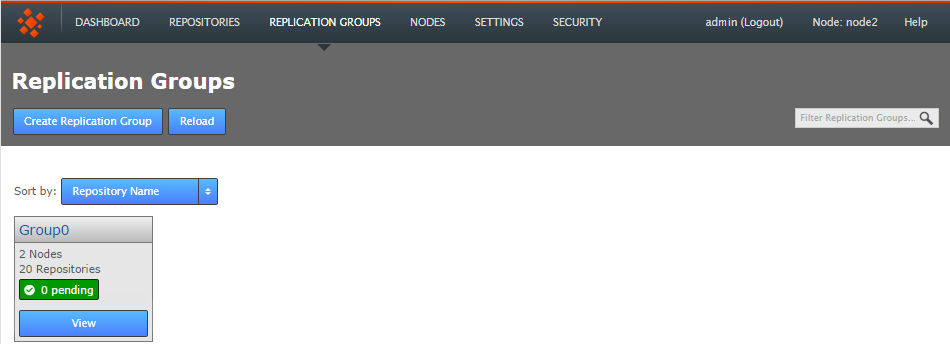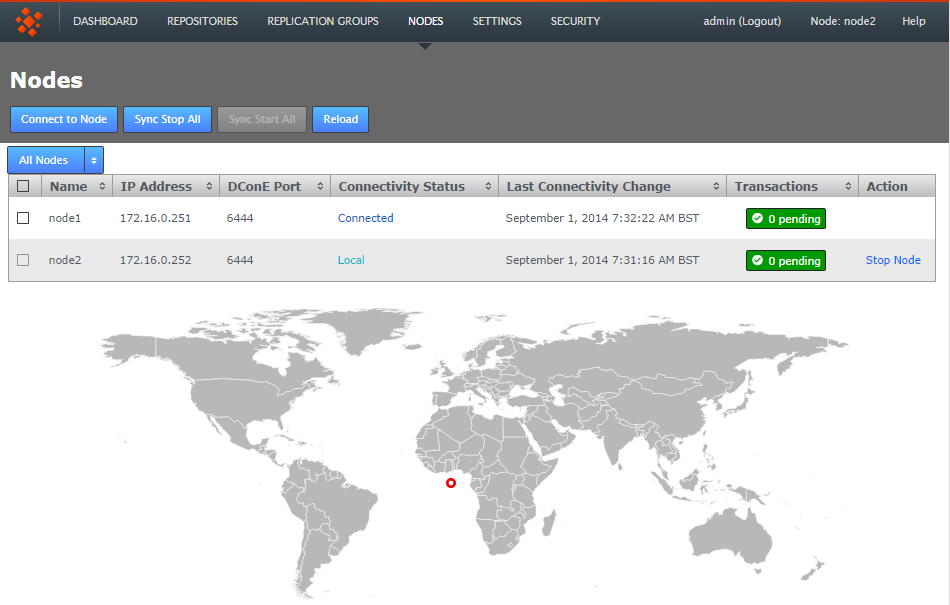
8. Reference Guide
8.1 Introduction
This reference guide runs through the various screens that are available within the Git MultiSite admin UI. We'll explain what each screen is used for and provide details about the function of each setting. However, we won't run through how you should use the product features, procedures for doing things are covered in the Admin Guide.
Dashboard
The Dashboard is a monitor, providing an administrator with a way to track changes on selected repositories. The tab contains panel that will display messages for system messages that are important to known.

Dashboard.
- The System Status provides a single line status report on the state or Git repository replication. If replication is up and running you'll get a single line report on the number of repositories being replicated over a number of Replication Groups. If there's a problem you'll also see any WARNING messages that currently appear in the logs.

Warning on the dashboard.
System Status
Repositories
The Repositories tab is used to manage repositories hosted on the Git MultiSite node. It is used to create, remove or reconfigure repositories. It also reports the current status of repositories which is used when troubleshooting possible replication problems.

Repository Screen.
Repositories table
- Name
- A label provided for the repository at the point it was
- Path
- xThe local path to the repository. This needs to be the same across all nodes.
- Replication Group
- The replication group in which the repository is replicated.
- Size
- The file size of the repository.
- Youngest Rev
- This is an unused artifact that is used when MultiSite is used for replicating Subversion repositories.
- Transactions
- Displays the number of transactions that are waiting to be replicated. When the repository is up-to-date a "0 pending" label will appear. You can click on the pending number to view more details about the transactions.

- Last Modified
- The time-stamp for the latest change to the repository.
- Global RO
- Indicates if the repository is globally read-only.
- Local RO
- Indicates if the repository is locally read-only. A locally read-only repository is completely locked down, it does not accept new commits from SVN clients but does accept futher changes from within the replication system.
- Status
- Indicates whether the repository is replicating or has stopped. A stopped repository will be in a read-only state, either globally or locally.
The term Global Read-only doesn't accurately reflect what happens at the repository-level. When a repository enters a Global Read-only state it will no longer accept any commits from SVN clients. However, proposals that are flying around within the state machine can still be written. It is this state that allows nodes to reach a synchronized stop.
Remember that this table doesn't automatically show all the repositories on the server, only those repositories that have been added. See Add Repository.
Replication Groups
Replication Groups are how we bundle repositories for replication between a set of nodes. The Replication Group tab is used to create and configure Replication Groups.

Replication Groups Screen.
Nodes
The Nodes tab is used to manage, add and connect together MultiSite servers. Nodes are the servers that host both the WANdisco MultiSite software and Git repositories.

Nodes Screen.
Settings
The Settings tab controls Git MultiSite's internal settings which includes system properties that determine how replication works as well as some of Git MultiSite's management tools such as the email notification system or the Monitoring Data tool which checks the available disk space.

Settings Screen.
Security
The Security tab covers account management, LDAP or Kerberos configuration.

Security Screen.
Copyright © 2010-2013 WANdisco plc.
All Rights Reserved
This product is protected by copyright and distributed under
licenses restricting copying, distribution and decompilation.
Git MultiSite
Last doc build: 16:45 - Thursday 3rd July 2014